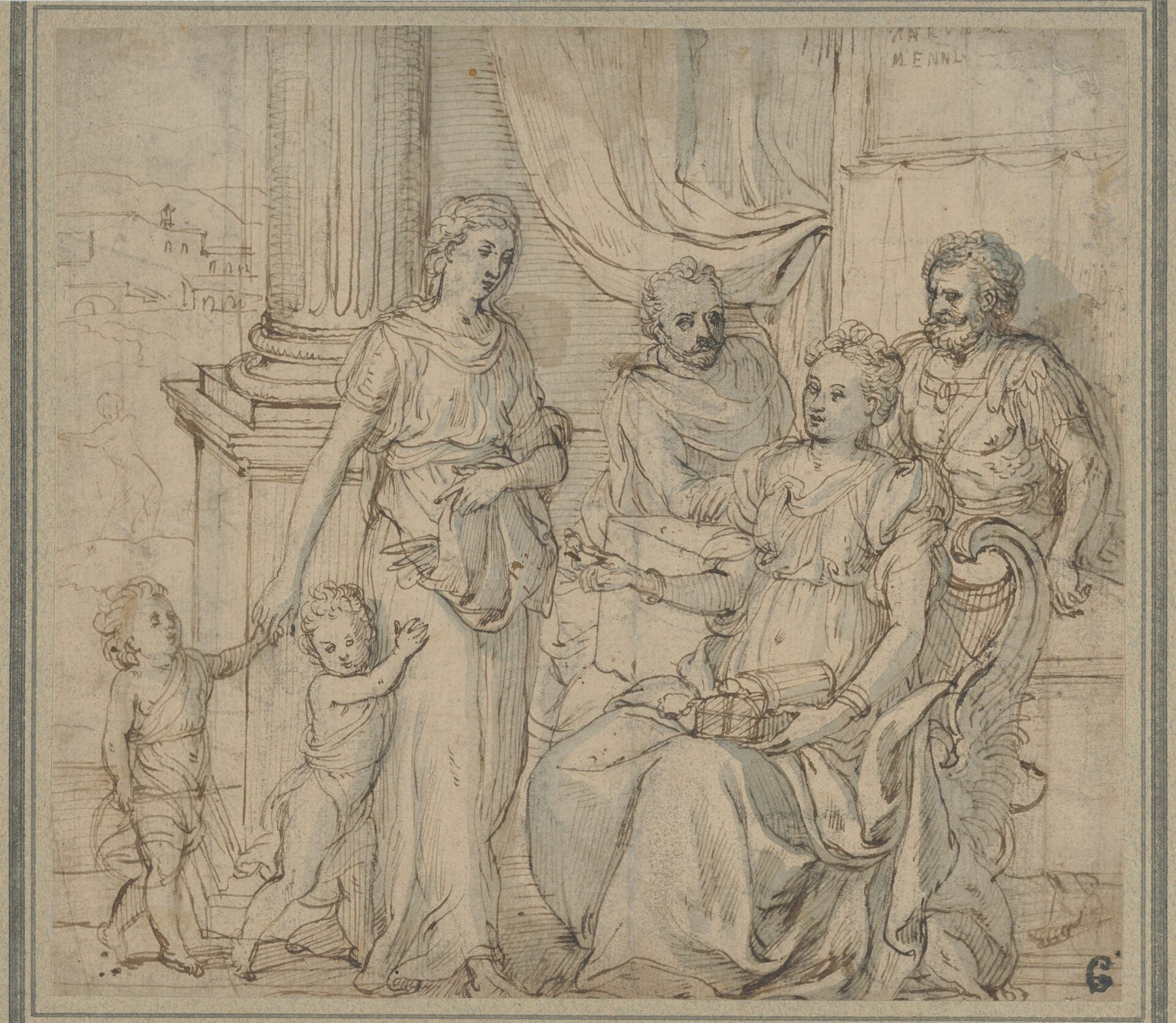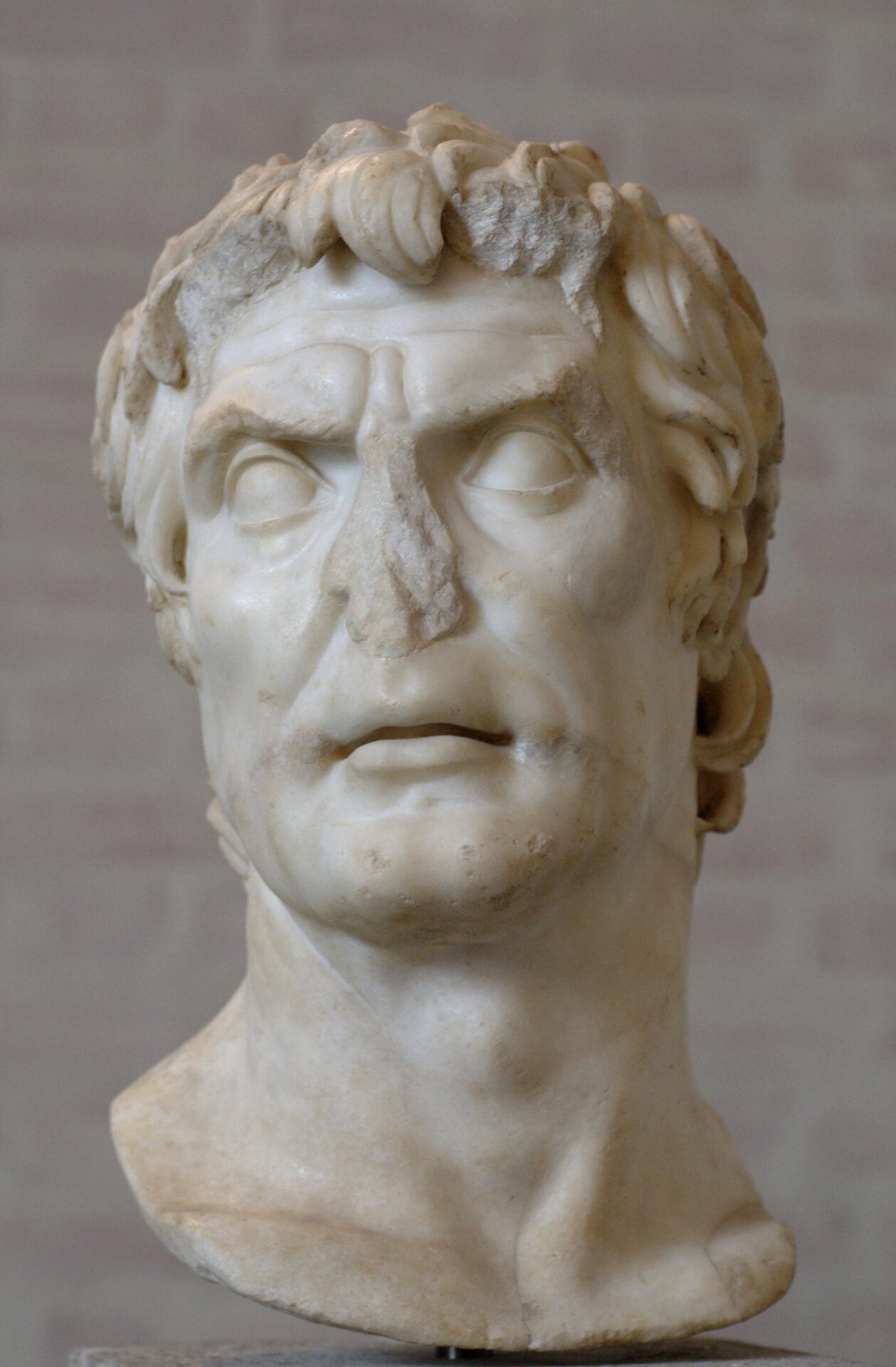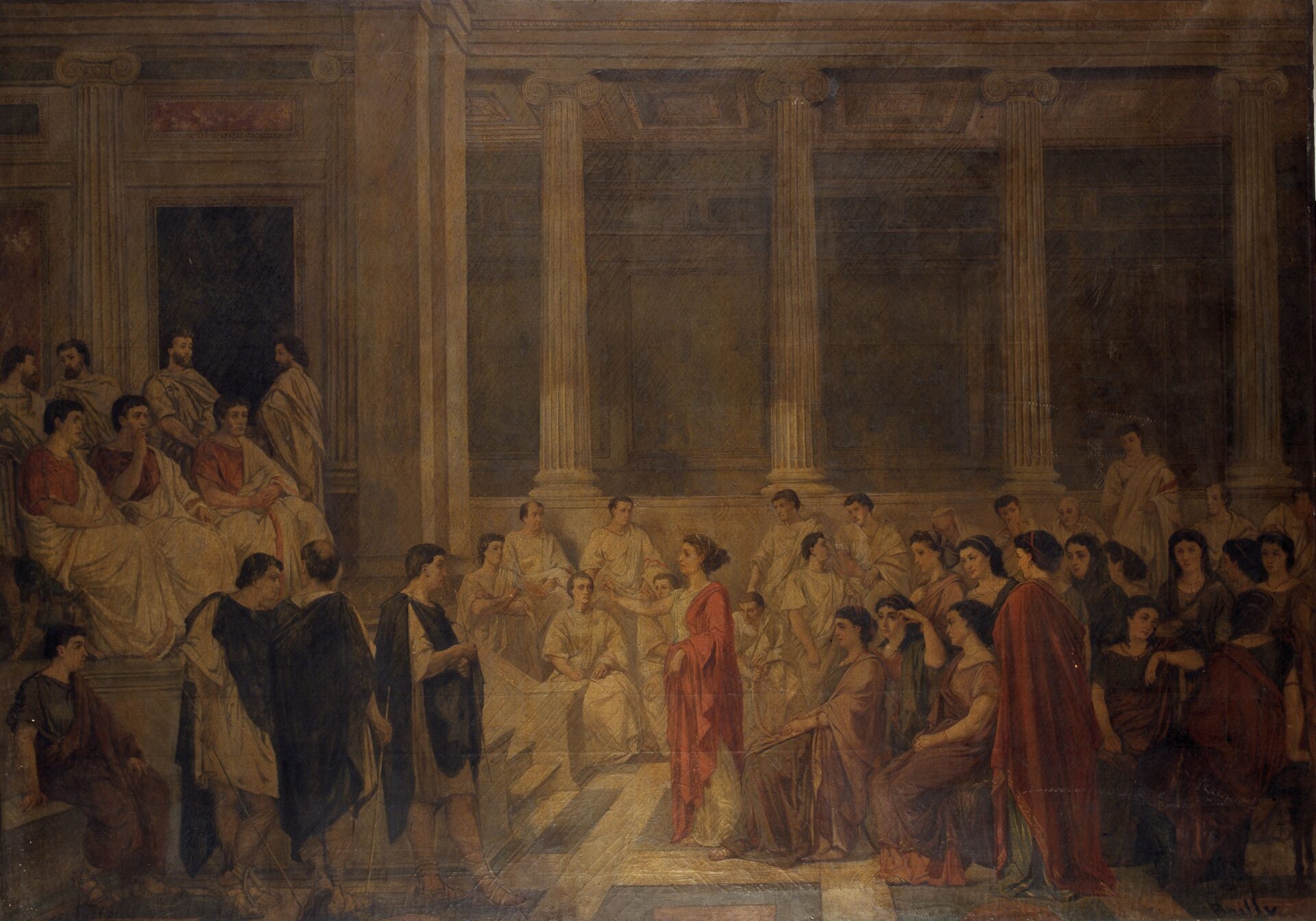This series of articles will try to explain the reasons for the fall of the Roman Republic and the establishment of the Roman Empire. It will use respectable sources and literature and will be published weekly. Part 3 – The Beginning of the Civil War Era in Rome.
Internal Turmoil
Problems of the Roman Republic and the Attempt of an Agrarian Reform
During the years of the late Roman Republic, two factions developed in the Senate. These two factions had different views on the direction in which the policy of the republic should develop. The Optimates persisted in the senatorial tradition of the old patrician families and represented a kind of aristocracy, while the Populares favored the plebeian assembly.
As the Roman state expanded, so did wealth, and with it, the Roman population. The senatorial class had complete control over the politics and, together with the equestrian class, formed the aristocracy. The aristocracy held most of the wealth in the state. In addition to them, the mass of the poor population lived in the city, as well as farmers who were of similar social status. After the Punic Wars, the concentration of gold and land was greatest in the hands of the most powerful aristocrats, while many veterans who had once belonged to the class of small landowners were left without land that they could not cultivate during the wars.
The disappearance of small landownership and the emergence of large landownership devastated Italy, according to Pliny. The first attempt at agrarian reform was carried out by the grandson of Scipio Africanus, Tiberius Gracchus, in 133 BC. Tiberius Gracchus was elected the people’s tribune for 133 BC in the midst of a tense political situation in Rome and proposed an agrarian law where landowners would be deprived of part of their estates, which would then be distributed to the landless for hereditary use. The landowners would be compensated, and a commission of three people called triumvirs would be elected to implement the law.

Obstructed by the optimates and fellow tribunes, Tiberius addresses the people directly, with whose help he manages to get the law passed, even using illegal means. The commission had many problems in its work, and the reaction was gaining momentum, so much so that Tiberius ran for tribune the following year, which was a precedent. In the midst of the elections, which were held in a tense atmosphere, Tiberius Gracchus was assassinated at the Capitol, and his death marked the beginning of the Civil War era.
Then weapons began to change the rhetoric and no one was safe without their companions. The agrarian commission continued its work after Tiberius’s death, and his reform was continued by his younger brother Gaius, who was the people’s tribune in 123 and 122 BC, which was already permitted at that time.
Gaius Gracchus passed a law on the distribution of grain to poor citizens, which significantly increased his own popularity, and he also managed to divide the aristocratic class by providing certain financial privileges to the equestrian class, and by granting their committees the right to judge, which he had previously taken away from the Senate. Through demagogy, the aristocratic party managed to separate part of the people from Gaius Gracchus, so that in 121 BC there were again street riots in which the younger Gracchus ended his life with three thousand of his supporters. The Civil War was on but the next period brought the extent of it to the next level.

Military Campaigns and Civil War
Although the state of the Roman Republic was far from ideal, the expansion of the state continued successfully, so that after successful wars the provinces of Asia Minor and Narbonne Gaul were founded in 121 and 118 BC. The Romans intervened in the struggles over the succession in the Numidian kingdom, where they sent diplomats to resolve the dispute, but these diplomats were bribed by Jugurtha, one of the princes, so they divided the state according to his will.
Jugurtha was not satisfied, so he attacked his cousin and was summoned to Rome to explain his actions. He escaped from Rome by bribing and continued to violate the agreement so that war broke out between the former allies in 111 BC. Jugurtha continued to give gifts to Roman generals who did not want to fight against him, but over time the advantage in the war shifted to the side of the Romans.
The turning point of the war was Gaius Marius‘ assumption of command of the Roman army in 107 BC. He continued to win battles and his quaestor Lucius Cornelius Sulla captured Jugurtha, which ended the war. Jugurtha was executed after a triumph in 104 BC. After this war, Gaius Marius became consul for the first time. In the same year, Marius joined the war with the Cimbri and Teutones, in which he later became victorious after the Battle of Aqua Sextium in 102 BC. His former quaestor Sulla gained his fame in the Allied War, after which he was also elected consul for the first time.

Gaius Marius carried out a reform of the army, which improved the combat readiness of the troops. The old system of mobilization of the army became increasingly difficult, so Gaius Marius was the first to recruit ordinary citizens into the army, which significantly increased the number of Roman soldiers. Soldiers received pay and equipment, and the service was set at 16 years. After that, soldiers received a discharge and land. After Marius’s reform, the Roman army grew stronger, but the soldiers felt more loyalty to their commander than to the republic. The military leader made them richer and they expected new conquests and plunder. This is where the beginning of civil wars can be seen.
The civil war was caused by Gaius Marius’ desire to wage war against the Pontic king Mithridates, although the Senate had entrusted the command of the army to Sulla. Sulla decided to seek support from his army, which had supported him in the campaign against Rome since the soldiers themselves were afraid that they would be replaced and would be left without the spoils of war. In a battle at the very entrance to the city, Sulla’s forces defeated the Marians, whose leader fled to Africa, and Sulla became the master of the city and as such went to war against Mithridates.
Upon learning of Sulla’s departure, Marius returned to Rome, where, with the help of Cornelius Cinna, he instituted a reign of terror and established his own rule, marked by proscriptions. Gaius Marius did not live to see Sulla return from the war, as he died of natural causes in 86 BC, so Cinna took over leadership of the populares.
In the meantime, Mithridates arrived in Greece from Asia Minor with an army. Lucius Cornelius Sulla landed with an army and conquered Athens in 86 BC. At the Battle of Chaeronea in Boeotia, Sulla defeated Mithridates, and peace was concluded in Dardanus in 85 BC. Sulla forced Mithridates to abandon the conquered territories. Sulla was in a hurry to end the war in the East and to engage in battle with his political opponents. In the spring of 83 BC, Sulla landed at Brindisi to take control and end the civil war. Among the first to approach him was the young Gnaeus Pompey.
The Marians had gathered a large army, but they had no unified plan for the battle. In some cases, they offered stubborn resistance, but Sulla managed to defeat the armies of his enemies. Cinna was killed in a mutiny of his own army while preparing to fight Sulla. Sulla’s victory over the Marians was followed by fierce revenge both in Italy and in Rome. Having seized power, Sulla declared himself dictator for an indefinite period in order to restore order in the state. The first part of the Civil War era was over and Sulla was the winner.

The magistracy of dictators of earlier periods was strictly limited in time, while Sulla was appointed dictator for an indefinite period. Since Sulla belonged to the Optimates, all his innovations were imbued with a conservative spirit, directed against democracy and aimed at establishing the order that existed in Rome before Gracchus. The rights of the National Assembly and the power of the people’s tribunes were limited in 81 BC.
Sulla voluntarily renounced the dictatorship and returned consular power in 79 BC and left politics. Sulla’s dictatorship changed the history of Rome and created means for the abolition of the republic, and his and Marius’ proscriptions led to the disappearance of many old prominent figures, whose places were taken by some new prominent individuals who radically changed the appearance of the Roman republic and mark the Civil War era.
Sources and Literature:
Appianus, of Alexandria. (1902). Appianou Romaikon Emphylion A = Appian, Civil Wars, book I. Oxford: Clarendon Press,
Morey, W. C. (1900). Outlines of Roman history: For the Use of High Schools and Academies.
The Cambridge Ancient History IX (2008),
Beard, M. (2015). SPQR: A History of Ancient Rome.
Hello, my name is Vladimir, and I am a part of the Roman-empire writing team.
I am a historian, and history is an integral part of my life.
To be honest, while I was in school, I didn’t like history so how did I end up studying it? Well, for that, I have to thank history-based strategy PC games. Thank you so much, Europa Universalis IV, and thank you, Medieval Total War.
Since games made me fall in love with history, I completed bachelor studies at Filozofski Fakultet Niš, a part of the University of Niš. My bachelor’s thesis was about Julis Caesar. Soon, I completed my master’s studies at the same university.
For years now, I have been working as a teacher in a local elementary school, but my passion for writing isn’t fulfilled, so I decided to pursue that ambition online. There were a few gigs, but most of them were not history-related.
Then I stumbled upon roman-empire.com, and now I am a part of something bigger. No, I am not a part of the ancient Roman Empire but of a creative writing team where I have the freedom to write about whatever I want. Yes, even about Star Wars. Stay tuned for that.
Anyway, I am better at writing about Rome than writing about me. But if you would like to contact me for any reason, you can do it at contact@roman-empire.net. Except for negative reviews, of course. 😀
Kind regards,
Vladimir
